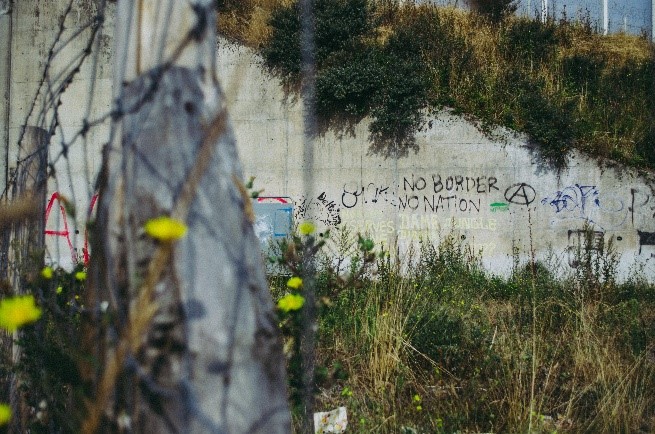Cryptocurrencies have gained a lot of attention and scrutiny over the past few years. Especially recently as big-name companies like Tesla buy into Bitcoin, giving institutional backing and bolstering investors belief in the future of the bubbly and speculative coin. But, in which countries are cryptocurrencies most used? You would be forgiven for thinking that the US or China top the list. In fact, Nigeria is first with 32% of respondents in a survey stating that they own or have owned a cryptocurrency (Buchholz 2021). The next two countries on the list are Vietnam and the Philippines, with 21% and 20% respectively using or having used cryptocurrency. Why do so many people in these countries make use of cryptocurrencies? They are developing countries, with many nationals living abroad and are amongst the top counties globally sending remittances back home (IOM 2020).
Indeed, migrants from a few developing countries have turned to cryptocurrencies like bitcoin as an intermediary to transfer and exchange money. This information highlights the contributory and innovative aspect that a cryptocurrency can, and is, offering. For migrants, Bitcoin acts as an asset to transfer money with no or very low costs of transfer and allows for exchanges between currencies with no mark-up.
Can cryptocurrencies offer an innovative solution for migrant remittances to developing countries? To answer this question, we must first consider the current situation. There are approximately 272 million migrants globally, and remittances are a huge source of income for low- and middle-income countries, totalling about $554 billion at the end of 2019 (IOM 2020). Therefore, the necessity to safeguard the effective and economical transfer of remittances is consequential for the alleviation of poverty, routes to economic empowerment and growth, and reduction of inequalities amongst countries, within countries, and between the genders. However, sending money back home is no easy task for many migrants, especially the poorest among them. This is due to factors like high costs for international transfers by private companies such as WesternUnion or MoneyGram. More broadly, underdeveloped financial systems limit the options available; access to bank accounts and online banking systems needed for online transfers are not readily available for many. In fact, the “unbanked”, as called by the World Bank, are mostly from developing countries in the world; amongst these the poorest households have the fewest bank accounts, and women are categorically underrepresented (World Bank 2018). Holding a bank account is a necessary step for any currency transfer; even cryptocurrency.
A solution for the “unbanked” is mobile money, like M-Pesa. This directly tackles the very real problems such as physical access to banks or the risk of holding loose cash in remote areas of developing countries. First kicking-off in Kenya during the early 2000’s, M-Pesa is a phone-based money system where owners can text their money transfers with their phones. If they want to withdraw or deposit in local currency, they text the amount and meet with an agent; people working for the company/bank who are strategically placed in key locations and act as human-ATMs (Piper 2020). This system has been widely successful in various African countries, with 72% of the population in Kenya and 43% in Uganda having a mobile money account. The wide spread success has been accredited to the extremely low barrier to entry; a Nokia phone. Moreover, there are no minimum amount requirements. Yet, mobile money has had little success outside of Kenya, Uganda and a few other countries in Africa. Moreover, it does not solve problems of international transfers.
So, returning to the original question, can cryptocurrencies offer an innovative solution for migrant remittances to developing countries? Yes and no. In theory, cryptocurrencies can really provide an effective and economical channel for money transfers to help alleviate poverty through remittances. However, there are two principle problems. Firstly, coins such as Bitcoin remain too volatile, in fact ten times more volatile than major currencies (Baur & Dimpfl 2021). This means that if migrants were to use such channel they would be exposing themselves to extreme risks. But, more importantly users of bitcoin may find themselves victims of speculative attacks, as the cryptocurrencies’ value remains completely speculatively constructed. Secondly, as with international bank transfers, cryptocurrencies need a bank account to buy and sell it. As explained above, having a bank account is not a given and represents a high barrier to entry for many of the poorest migrants.
At the same time, these two problems are not insurmountable; a mobile-money system tailored to the receipt, exchange and sale of a cryptocurrency may make them widely accessible to the people who are in most need and who have least access. Moreover, while Bitcoin is the most known of the currencies, a lesser known or new cryptocurrency may also work. Indeed, China is issuing its own cryptocurrency (the digital Renminbi) which, although is still in its early stages, should work without the volatility problems that other crypto-coins have because of government reserves and backing (Kynge & Yu 2021). Therefore, if large development institutions such as the World Bank were to create a cryptocurrency with reserves to stabilise it, much like a central bank, they could drastically reduce volatility. This would offer a stable asset that migrants could use for international transfers and currency exchanges.
Whether cryptocurrencies will prove to be useful or not is hard to predict, and a multitude of factors must align. However, the possibilities of this new technology are vast and should not be limited to speculative uses.
References
Buchholz, K., 2021. Infographic: How Common is Crypto?. [online] Statista Infographics. Available at: <https://www.statista.com/chart/18345/crypto-currency-adoption> [Accessed 25 March 2021].
IOM – International Organisation for Migration, 2020. WORLD MIGRATION REPORT 2020. [online] Geneva: International Organisation for Migration (IOM). Available at: <https://publications.iom.int/system/files/pdf/wmr_2020.pdf> [Accessed 25 March 2021].
World Bank, 2018. Global Financial Inclusion (Global Findex) Database. [online] World Bank, pp.35-41. Available at: <https://globalfindex.worldbank.org/sites/globalfindex/files/chapters/2017%20Findex%20full%20report_chapter2.pdf> [Accessed 25 March 2021].
Piper, K., 2020. What Kenya can teach its neighbors — and the US — about improving the lives of the “unbanked”. [online] Vox. Available at: <https://www.vox.com/future-perfect/21420357/kenya-mobile-banking-unbanked-cellphone-money> [Accessed 25 March 2021].
Baur, D. and Dimpfl, T., 2021. The volatility of Bitcoin and its role as a medium of exchange and a store of value. Empirical Economics,. Available at: <https://link.springer.com/article/10.1007/s00181-020-01990-5> [Accessed 25 March 2021].
Kynge, J. and Yu, S., 2021. Virtual control: the agenda behind China’s new digital currency. [online] Ft.com. Available at: <https://www.ft.com/content/7511809e-827e-4526-81ad-ae83f405f623> [Accessed 25 March 2021].




http://virtuelcampus.univ-msila.dz/facdroitsp/
Thank you a lot for giving everyone an exceptionally splendid possiblity to read critical reviews from this web site.